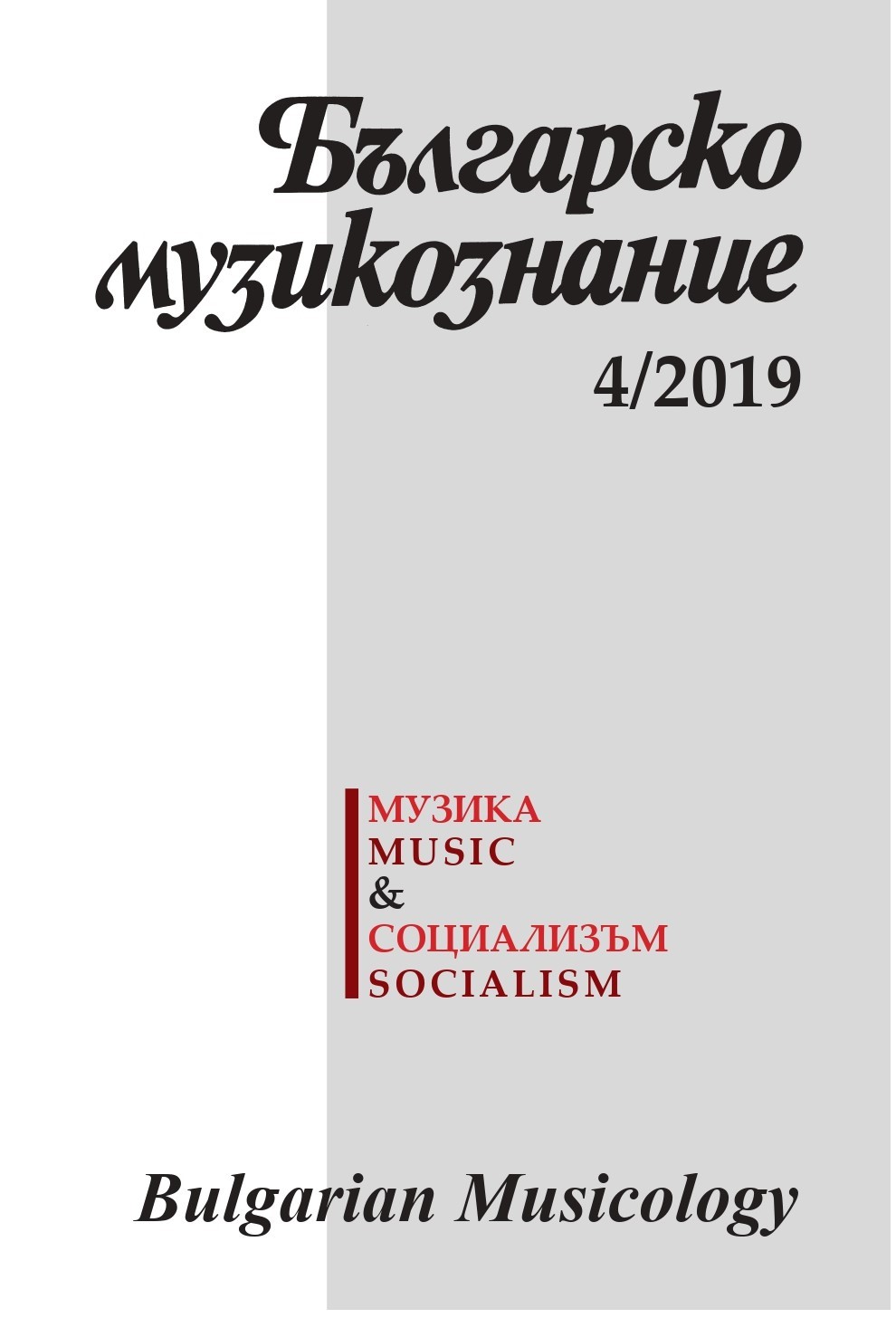Минор и радост: опит за проникване в музикалното мислене през масовата песен от 40-те до края на 50-те години на ХХ век
Minor Mode and Joy: An Attempt to Make Sense of the Musical Thought by Using the Mass Songs of the mid-1940s – 1950s
Author(s): Mariyana BulevaSubject(s): History, Fine Arts / Performing Arts, Music, Local History / Microhistory, Recent History (1900 till today), History of Art
Published by: Институт за изследване на изкуствата, Българска академия на науките
Summary/Abstract: The period from the mid1940s until the late 1950s is a stage in the development of Bulgarian cultural history which is most difficult to explain. The social life at the time was severely controlled, organised and governed in the mould of a strong ideological propaganda. Publications of that time define mass songs as an essential and significant genre, as an ‘untested tool in the fight against formalism’. The question is to what extent the very phenomenon of ‘musical thought’ was subject to direct manipulation. Mass songs were largely marching music and their musical language was tonal. Yet, an analysis of tens of mass songs shows that the natural minor mode permeated the marching and hymnal songs. This is usually explained as an endeavour to lend such songs a folk ring, which is consistent with the requirements of ingraining them into the folk tradition. Throughout the history of Bulgarian musical culture though, a certain specific is identified: major and harmonic minor modes have not, ever since the Late National Revival period, functioned in the sense of the term ‘major-minor system’, which has been mechanically ascribed to them. In this country, the major mode is naturally in alignment with the other diatonic modes, due to which its partner is in fact the minor-permeated Aeolian mode. It has bearing on the semantic field of the tonal system: minor is not a qualitatively defined in opposition to major, but rather in terms of its semantic variation and complementary contrast, lending mass songs majestic epic and heroic pathos. That was the reason why even songs containing the keyword ‘joy’ often sounded in a natural minor mode, symbolising the ‘wise’ joy which stems from an age-long family tradition. Therefore, the authorities in fact guided an already existing state of musical thought, while the genre spontaneously utilised the opportunities provided by this specific musical code, forming a natural musical environment for posterity. The frequent minormode re-conceptualization helped alleviate and humanise the overdosed ideological pressure.
Journal: Българско музикознание
- Issue Year: 2019
- Issue No: 4
- Page Range: 48-60
- Page Count: 13
- Language: English, Bulgarian
- Content File-PDF

